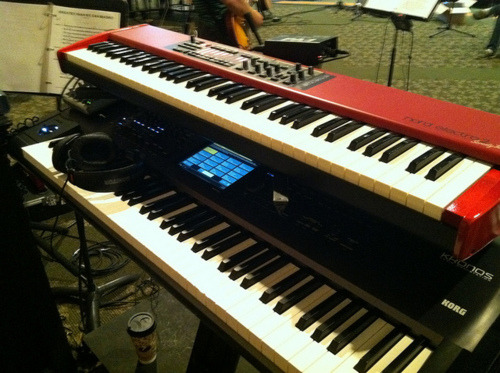Hello, and happy music-creating, everyone!
My previous blog posts have gone down a self-induced “black hole”; I’ll see what I can do about bringing them back…
This is the first in the continuing saga of my change from using Apple Logic Pro to Steinberg Cubase as the primary DAW for film composing. I used Cubase many moons ago when I owned an Atari Mega 2 computer. This was in “greyscale”, no colors, no audio; this was a sequencer, not a DAW, kids! As I became a Mac user in the early 90s, I moved to Opcode Studio Vision (loved loved loved SV Pro), then Emagic Logic Audio (later sold to Apple). I’ve been working with Logic since 1994. It was and still is a wonderful program. This past summer I attended a few Club Cubase seminars given by Steinberg software wiz Greg Ondo, and I also watched a number of the tutorial videos on the Club Cubase YouTube channel. Different aspects of the program started to appeal to me, so I eventually downloaded a demo and started chipping away at learning a new DAW. I also made this switch mid-project, to which I would normally say, “don’t do that!”; however, the transition really was seamless. I was able to get many of the similar key-commands I was used to in Logic happening rather quickly.
One of the first things I noticed was how great the audio sounded. Around the same time I started using Cubase, my audio interface went on the fritz (never a good thing when in the midst of a number of jobs), so I bought a Focusrite Saffire Pro 40. I’m sure the addition of the Focusrite helped in this regard; mixes seemed better to my ears, whether by the addition of the new hardware alone, or the use of Cubase, or both.
Some things are taking me a while to get adjusted to, namely the icons on the mixer; seems busy. A couple viewings of the mixer tutorial on the Club Cubase video channel has been a big help. The use of pastel colors is another thing….not a biggie, and I’m sure (I hope) that will evolve with further updates. I love how setting up multi-output VST instruments works in conjunction with folder tracks. Also, working with quick time movies is really great, and the stems-creation feature is killer. I’ll talk more about these things in later posts.
Here is my first Cubase project, “After Darkness, Light”, produced by Citygate Films forDesiring God. The opening choral piece was excerpted from “Lux in Tenebris” by James Whitbourn, used with permission.
Here’s a link to the ClubCubase YouTube Channel. Greg is a good teacher; he’s methodical, and gets the basics explained well in a short time period:



